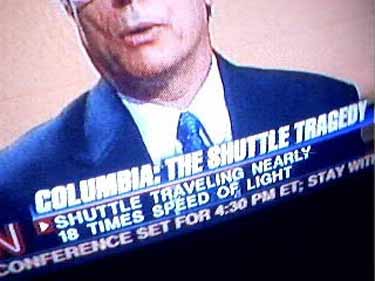
Posted on 09/01/2005 7:08:26 PM PDT by KevinDavis
A Look at the Scaling
The ideal interstellar propulsion system would be one that could get you to other stars as quickly and comfortably as envisioned in science fiction. Before this can become a reality, three scientific breakthroughs are needed: discovery of a means to exceed light speed, discovery of a means to propel a vehicle without propellant, and discovery of a means to power such devices. Why? - Because space is big, really, really, really big.
Space takes up a lot of space!
Interstellar distances are so astronomical (pun intended) that it is difficult to convey this expanse. Consider the following analogy: If the sun were the size of a typical, 1/2 inch diameter marble, the distance from the sun to the Earth, called an "Astronomical Unit (AU)" would be about 4 feet, the Earth would be barely thicker than a sheet of paper, and the orbit of the Moon would be about a 1/4 inch in diameter. On this scale, the closest neighboring star is about 210 miles away. That’s about the distance from Cleveland to Cincinnati.
(Excerpt) Read more at nasa.gov ...
Warp drive? Hyper drive? GET REAL, PEOPLE - that's all science fiction!
What we REALLY need to do is dig up a Stargåte somewhere…
Interesting, very interesting!
Who cares about the galaxy?
I have not even seen the grand canyon yet.
If time slows for a traveler as he approaches the speed of light when viewed from an earthbound observer's perspective, wouldn't Earth-time appear to speed-up from the traveler's perspective? If the traveler got close enough to the speed of light to make it seem as if time had stopped, wouldn't millions of Earh-years pass for every second endured by the traveler? But from the traveler's perspective, wouldn't that journey of millions of Earth-years seem to be over in mere seconds, if not instantly?
I'm no engineer, but isn't this kind of a stupid statement?
As one approaches the speed of light one's mass increases. As mass increases the passage of time slows. This is a feature of the make up of space.
Accelerate a space craft at 1 gravity constant boost for about 290 days and you will achieve 99.9% the speed of light (186,281.999 mps). This is feasable in theory, but difficult in practice. At such a velocity time would pass very slowly aboard ship, and hence the length of time it would take for a ship to travel the 10 or so light years between our system and, let us say, Tau Ceti, would shrink to just a few months. So ... about a trip of about 10-11 years as observed from the Earth would only take about 2 and a half years for those aboard ship.
Do-able, in theory. In practice, difficult. The point is ... for short-range interstellar travel (under 100 light years) one really doesn't need hyper-light ability. Given current understanding of physics, it could be done. It would take a mastery of Fusion power generation and some kind of a "Bussard Ram Jet" to collect Hydrogen from the interstellar medium to use as fuel, but it could be done. And the travel time would only be a few years (at most), not decades.
One proposed method of faster than light travel that has been proposed in some academic papers has been to arrest the "mass increase" feature of relativistic physics. It's the increase of mass toward infinity which makes it impossible for space craft to travel faster than light because it is impossible to accelerate something with a mass of infinity. By arresting the mass increase function, it should be possible to continue accelerating past the speed of light. HOW to arrest mass increase should be a function of gravitational physics, so once we learn how to control gravity we really should be able to do it.
That's why we hire SG-1!!!
Actually, real soon now. Just after we achieve Godhood.
You mean like the Scientologists? Couldn't they be of some help?
Yeah, but the problem is you think you're gone for six months and when you come back the world is run by damn dirty apes...
Yes. My daughter is reading some book on all this. One other confounding factor is that mass increases with speed. As you approach the speed of light, your mass approaches infinity. I don't know how she gets this; it's just a brain smoker for me.
You think like my daughter.
After you die you can travel at the speed of thought.
Face it. We're stuck here. We won't even ever go to the moon again.
Oh, I'm sure of it!
Do you want Travolta's number? You can be our emissary.
I like the gravity well idea. I've always theorized that if you cored the earth and jumped in, you would pass the center and keep going. Of course, you'd ultimately approach the other side of the earth and then get pulled back in.
The solution: Take an earth-sized planet (mars is close enough) and halve it like a grapefruit. Core the halves, aim the flat side in the direction you want your spacecraft to travel, and drop it in from the other side and you're on your way.
Haven't heard back from NASA on that yet.
Awkwardly phrased perhaps, but not stupid.
"a means to move a vehicle (in space) without propellant"
may convey the meaning better.
Consider slingshot maneuvers. Efficient, but no propellant consumed, just pure gravity-boosting.
Or other schemes, such as solar sails.
I was thinking more along the lines of a mini black hole but NASA hasn't gotten back to me yet either.

Disclaimer: Opinions posted on Free Republic are those of the individual posters and do not necessarily represent the opinion of Free Republic or its management. All materials posted herein are protected by copyright law and the exemption for fair use of copyrighted works.